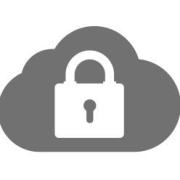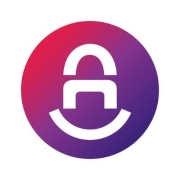Application Security Tools are designed to ensure the security of applications by identifying vulnerabilities and potential threats during development and operation phases. They play a crucial role in safeguarding data integrity and user privacy.
These tools provide comprehensive security assessments and support for applications, focusing on identifying weaknesses in code and preventing threats. Users share insights about their effectiveness in real-world environments, emphasizing their value in streamlining security processes. The integration of such tools into development cycles not only enhances security but also fosters a proactive culture of risk management within organizations.
What are the critical features to consider?In the healthcare industry, Application Security Tools are implemented to protect patient data and ensure compliance with HIPAA regulations. In finance, they help manage risks associated with financial transactions by securing applications that handle sensitive financial information.
Organizations benefit from these tools through enhanced security capabilities that protect customer data, increase trust, and support business growth. They enable companies to maintain robust security standards in an ever-evolving digital landscape.
| Product | Market Share (%) |
|---|---|
| SonarQube Server (formerly SonarQube) | 19.3% |
| Checkmarx One | 10.4% |
| Veracode | 6.9% |
| Other | 63.4% |






















































































Application Security vs Software Security
Software and the infrastructure on which the software runs need to be protected. This involves both software security, which is proactive and takes place in the pre-deployment phase, and application security, which is reactive, taking place once the software has already been deployed.
Software security is about designing and building software that is secure.
It involves a holistic approach to improve your organization’s information security posture, safeguard its assets, and enforce data privacy.
Software defects can be exploited by malicious intruders and used to hack into systems. Internet-enabled software presents the most common security risk, and as software becomes more complex, the problem only grows.
Secure software is software that is engineered to continue to function correctly even under malicious attack. To ensure that software is secure, security must be built into all phases of the SDLC (software development life cycle).
Software security activities take place during the design, coding, and testing phases, and may include:
Application security, on the other hand, is about protecting software and the systems run by the software after it has been developed.
Application security activities include:
All applications have security flaws. No app is perfect. The faster and sooner in the development process you can find and fix these flaws, the better off your enterprise will be.
With today’s continuous deployment and integration of applications, apps are being updated and refined constantly. This means that security tools need to keep the pace, finding issues with code much faster than they did in the past.
Interestingly enough, as new applications continue to come out, new vulnerabilities are constantly introduced. We are actually creating many of the tools that cybercriminals use against us and building them right into our applications.
Your organization needs an application security program in order to ensure that as your apps are developed and managed, they are secure and are not opening your company up to attack.
There are four main reasons why application security is important:
One of the reasons apps are such a popular target is because organizations are not careful enough about securing them. In fact, 79% of developers have an ineffective application security process or none at all. While businesses spend billions securing their hardware, network, and perimeter, they are not investing sufficiently in the security of their applications.
You need to secure your apps because:
1. Your applications are inextricably tied to the success of your business. Insecure applications equal an insecure business.
2. Most, if not all, apps are vulnerable. According to a report by Veracode, 70% of all applications they looked at had at least one of the top 10 web vulnerabilities.
3. Apps are the number one attack target and attacks against them are growing by more than 25% per year.
4. You can’t afford not to. Data breaches cost businesses around the world hundreds of millions of dollars. If you experience a data breach, you will have to deal with:
RASP is a technology that is designed to detect attacks on an application in real time. When an application begins to run, RASP kicks in and analyzes the app’s behavior as well as the context of that behavior in order to identify threats that might have been overlooked by other security solutions..
RASP operates on the server the app is running on, and can protect both web and non-web apps. It makes sure that all calls from the application to the system are secure and directly validates data requests inside the app.
When a security event occurs, RASP takes control of the app. It can be set to diagnostic mode, in which case an alarm will alert the IT department that there is a problem. Or it can be set to protection mode, in which case it will try to stop the event by preventing the execution of an app or terminating the user’s session.
The application layer is the number one attack surface for hackers - 84% of cyber attacks occur on the application layer. You should be building security into the software development life cycle (SDLC). Below are four best practices for secure application development:
When evaluating Application Security Tools, you'll want to consider features such as automated vulnerability scanning, comprehensive reporting, integration with development tools, and real-time monitoring. Look for tools that support both static and dynamic testing and ensure they can handle the types of applications you're dealing with. Tools that provide actionable remediation advice and integrate seamlessly into your CI/CD pipeline will enhance development efficiency and security awareness.
How do Application Security Tools integrate into DevOps workflows?Application Security Tools integrate into DevOps by embedding security checks throughout the development lifecycle. They provide APIs and plugins for popular CI/CD platforms, allowing automated scanning and testing with each build. This integration ensures vulnerabilities are detected early, facilitating quicker remediation. By integrating security into DevOps, you maintain speed without compromising security, resulting in more secure applications and faster delivery times.
How can Application Security Tools improve threat detection?Application Security Tools enhance threat detection by using advanced algorithms to identify patterns that may indicate potential threats. These tools offer real-time monitoring and alerting, helping you react swiftly to emerging threats. They analyze various aspects of your applications, from code quality to user behavior, providing a comprehensive overview of potential security issues. This leads to proactive threat management and strengthened security posture.
Are open-source Application Security Tools effective for enterprises?Open-source Application Security Tools can be highly effective for enterprises, particularly if you have the expertise to deploy and manage them. They offer a cost-effective entry point into application security and often come with community support. While they may lack some features of commercial offerings, they are flexible and customizable. Combining open-source tools with commercial solutions can provide a robust security framework that meets enterprise needs.
What role do Application Security Tools play in compliance?Application Security Tools help ensure compliance with industry standards and regulations by continuously monitoring and testing applications for vulnerabilities. They generate detailed reports that aid in audits, proving adherence to security protocols. By automating compliance checks, these tools reduce manual effort and ensure ongoing alignment with regulatory requirements. This positions your organization as a trustworthy entity and minimizes risk of non-compliance penalties.